Larch on a trunk: description and types, planting and care
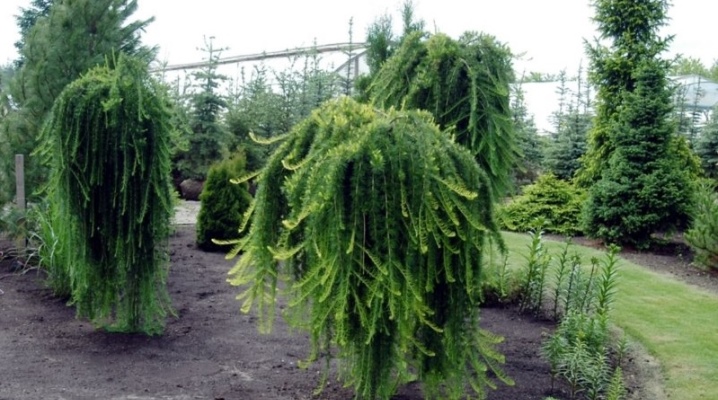
Conifers give the garden a fabulous appearance, fill the atmosphere with tranquility, allow vacationers to enjoy the fresh clean air. And if you apply a standard shape to a tree, then the site will look even more aesthetically pleasing. So, an excellent solution for landscape design is larch on a trunk.
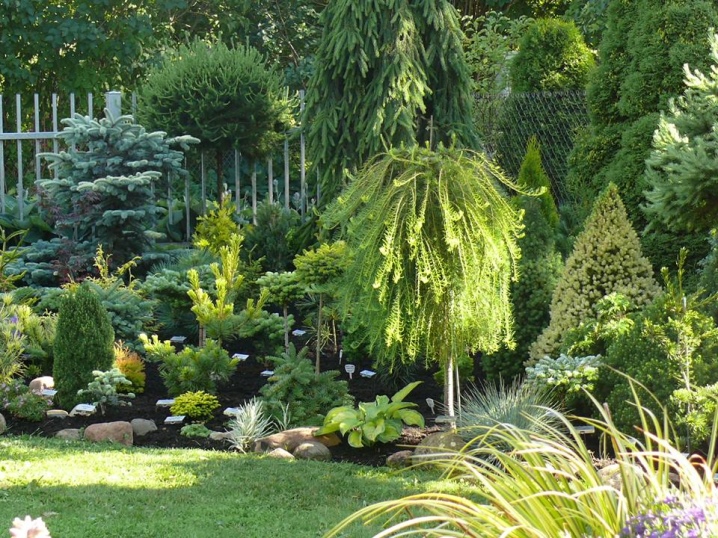
Peculiarities
Stamp forms are not large in size. The specificity of the crown is determined by the preferences of the gardener himself. The most popular forms are spherical, columnar, weeping. The stamp shape is created by trimming. And also it can be done by vaccination. Usually, the dimensions of the tree do not exceed 8 m, but after vaccination, the bole increases by 10 or 20 cm.Every year, the width of the crown grows by 20 cm - up to 1.5 m.
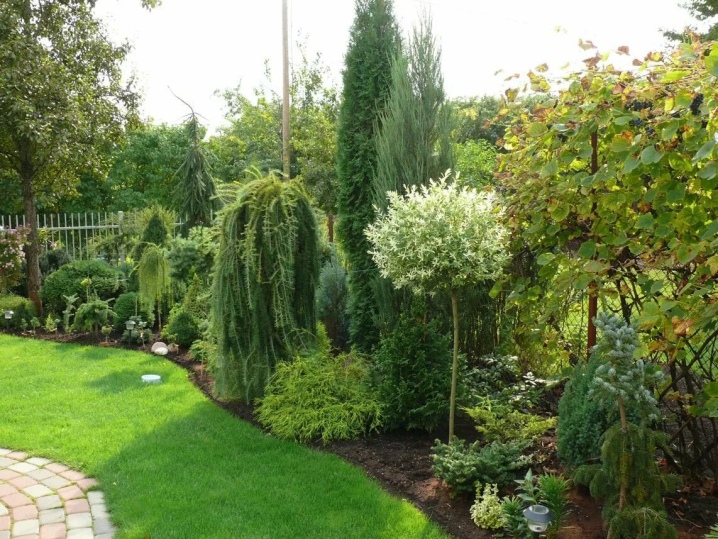
Larch needles are collected in bunches, depending on the variety, it can be of different shades of green. An adult specimen forms male and female cones. Female fruits are especially decorative, since they usually have very interesting colors. In autumn, the needles become yellow and fly around.

The larch on the trunk does not particularly shade the space, therefore, various types of other decorative crops can be placed under its crown.
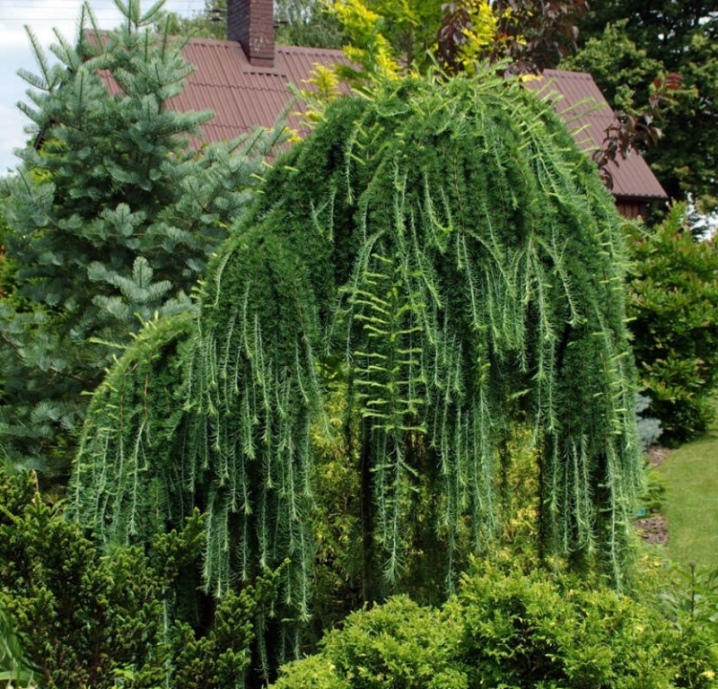
Varieties
Larch trees can differ in description, size and crown shape. Most often in Russian gardens, it is customary to use European, Siberian and Japanese standard forms. Several varieties are especially popular.
- "Pendula". A miniature tree with a crown diameter of no more than 1 m, the size depends on the height of the trunk. It is distinguished by a delicate blue-green color of the needles. This variety is light and moisture-loving, and also tolerates polluted air, so it is often planted in city parks. In addition, the wood has a pleasant aroma.
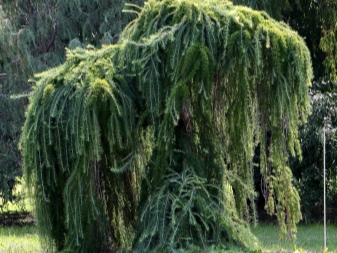
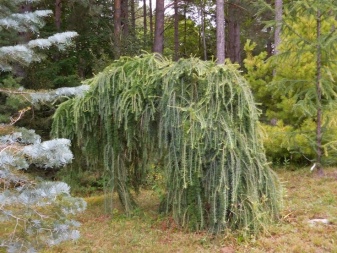
- "Stif Viper". This Japanese variety is one of the fluffiest of all. The height does not exceed 2 m and is more specifically determined by the height of the trunk. The crown is weeping, and the needles are bluish-green in color.
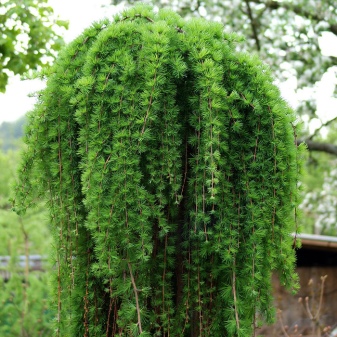
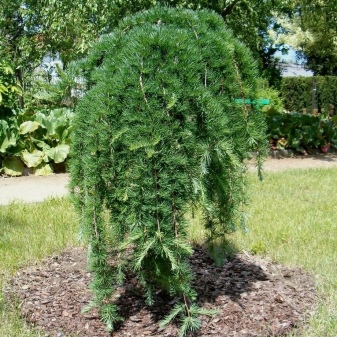
- "Diana". It differs from other varieties in spiral-shaped branches and red-brown wood. Annual growth is 25 cm in height and 10-15 cm in spread. The branches grow almost parallel to the ground, which creates a pyramidal crown shape.
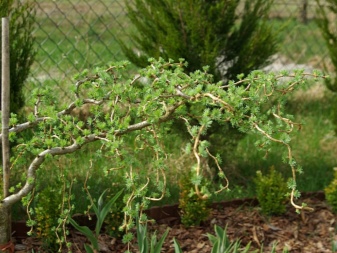
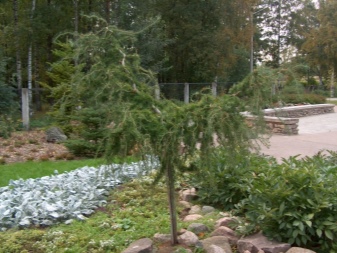
- Bullets. European variety, grafted onto a stem. It is characterized by very thin needles, due to which the tree has a very refined appearance. This larch has long, slightly branched branches, and the soft needles have a gray-green tint; in the fall, the needles are painted in golden colors.
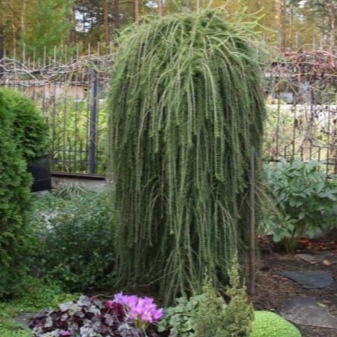

- Blue Dwarf. Another Japanese variety that has bluish falling needles. It is a dwarf species with a hemispherical crown, growing in length and width up to 1 m. The height depends on the height of the graft. It belongs to the slowly growing varieties - the annual growth is only 4 cm.
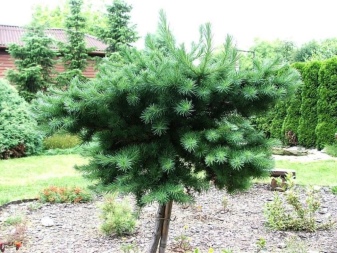

- "Kornik". Globular shrub with rich green needles. The height of the tree is not higher than 1.5 m, but more often this variety is grown in a standard form. The branches are not very large, they are dense and stretch upward.
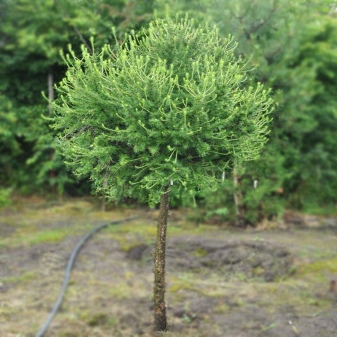
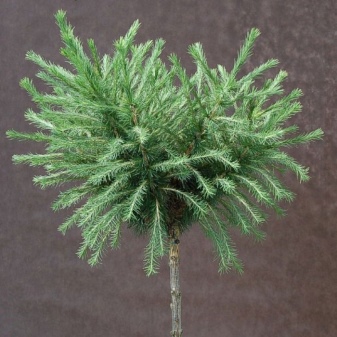
- "Repens". A European variety that is propagated by grafting with the participation of a stem no more than 1-1.5 m high. This is how miniature neat trees are obtained. This species has long plastic branches that aesthetically lean towards the ground and spread along it.The color of the needles is bright green, but by autumn it becomes yellow.
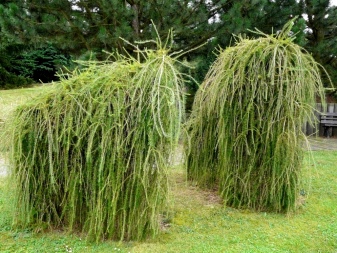
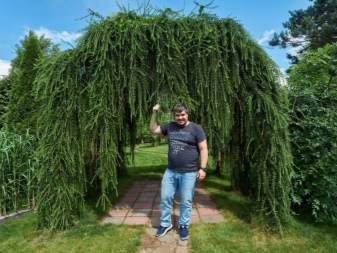
How to plant?
When planting larch on a trunk, it is important to take into account its timing. Experienced gardeners recommend planting the plant in early spring or in the first half of autumn. Particular attention should be paid to the choice of the site, since in the case of transplantation, the tree may die - it does not like this procedure. You need to choose a sunny place for planting, but the seedling will feel comfortable in partial shade.
The crop prefers to grow in light soil with good drainage.
Try to avoid planting in sandy soil. Also, do not plant shrubs in swampy areas and select an area that is far from the flow of groundwater.
In general, these trees are not too demanding on growing conditions.

The planting process is as follows:
- dig a hole 80–90 cm deep and 60–70 cm in diameter;
- make high-quality drainage with a layer of 20 cm;
- prepare the substrate - for this, combine the garden soil, humus and dolomite flour, add part of the mixture to the pit;
- pour 10–20 liters of water;
- carefully remove the seedling from the container along with the earthen lump, straighten the roots, if necessary, remove the tips with a knife;
- place the seedling together with the support, usually it is already included in the container upon purchase;
- make sure that when planting, the root collar remains above ground level;
- fill the free space with the remaining mixture and tamp the planting site;
- mulch the soil with peat, sawdust or chopped bark in a layer of 5 cm.
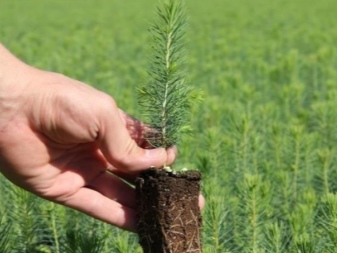
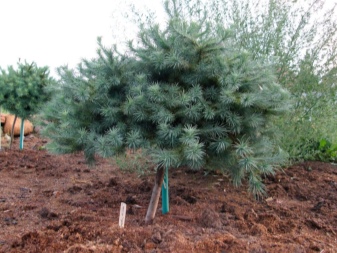
How to take care of it properly?
Caring for the presented culture is not difficult and includes several stages.
- Watering. Regularly, a young specimen needs moisture. In dry times, the volume of water for one sample is 2 buckets twice a week. With abundant and frequent precipitation, the tree does not need watering. Adult conifers do not need to be watered, they have enough natural moisture from precipitation.

- Top dressing. For active growth, the crop needs fertilizers based on potassium and phosphorus. The plant also responds well to compost. Additional nutrition is brought in in the first years of the tree's life in the spring - during this period the "Kemira" remedy is suitable. In June, it is advisable to feed the culture with urea in a proportion of 10 g per bucket of water. And it is also allowed to use formulations intended for feeding conifers.
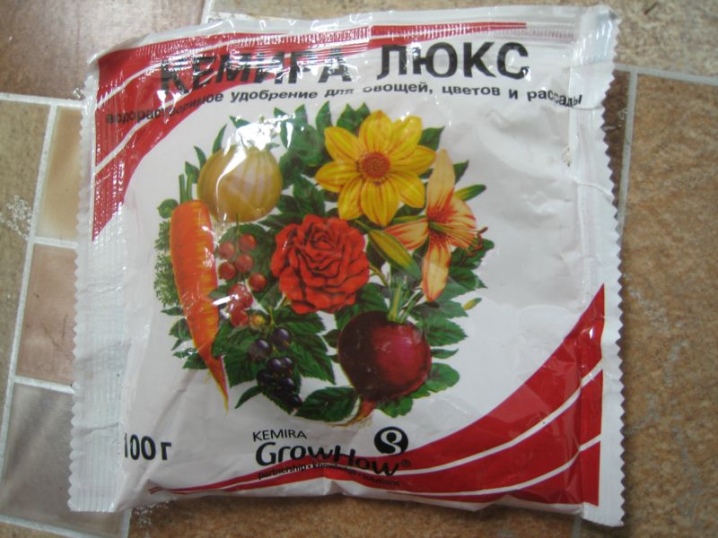
- Mulching and loosening. The layer of mulch laid out during the planting phase helps to retain moisture inside. It is also recommended to periodically weed and loosen the soil. In the first two years of life, loosening is carried out to a depth of no more than 20 cm. Try not to allow sod formation.

- Pruning and shaping. The stem is formed by decorative trimming. To do this, a central shoot is selected from the tree, all unnecessary branches are removed over several years, during which time the desired shape will be formed. If necessary, the stem is tied to the support. The crown is created by pinching the tops of the shoots. In addition to decorative haircuts, larch needs rejuvenating and sanitary pruning. The first is carried out in spring or early autumn. In the course of rejuvenating pruning, all weak branches are eliminated, and adult branches are cut by 1/3 so that new shoots appear on them. Sanitary cutting involves the removal of dried, damaged, sick, frozen branches.
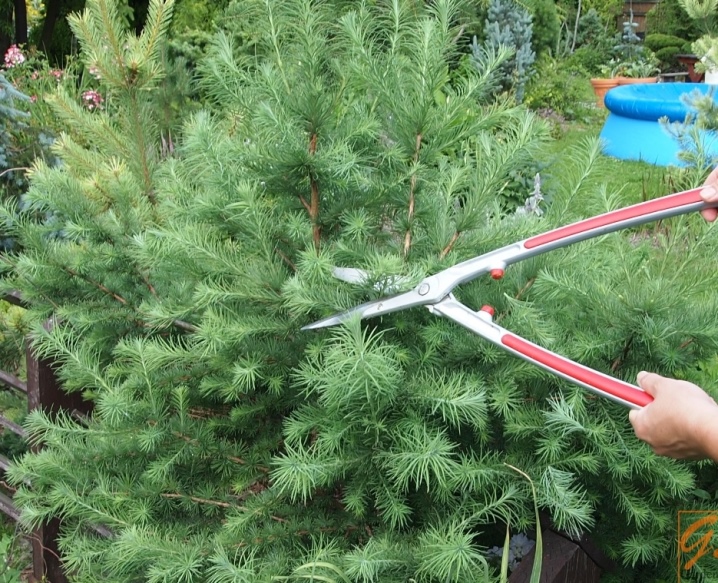
- Preparing for winter. Before wintering, in a young specimen, all dried branches are removed by the pruning presented above. To prevent the tree from freezing, a cover made of non-woven material is prepared for it. You can equip a fence for the winter. Mature trees do not need insulation - they tolerate frost well on their own.
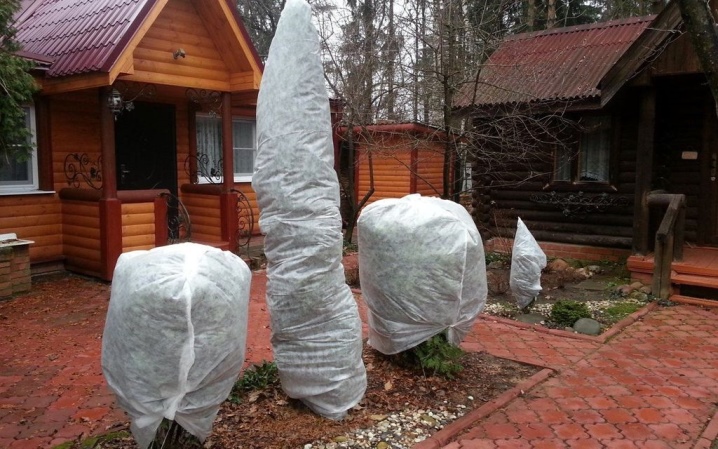
Reproduction methods
You can propagate larch on a trunk yourself, although not all methods are suitable for novice gardeners.
- Cutting method too long and laborious and is often used in nurseries.The technology consists in cutting off cuttings and subjecting them to conditions under which they take root.

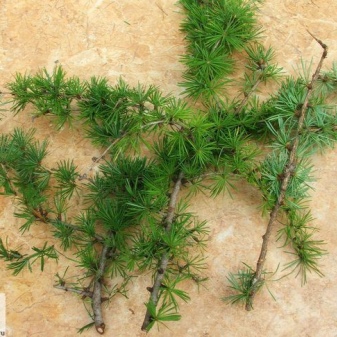
- Seed propagation is also not easy. Planting material is obtained from mature buds. The harvested grains must be soaked for two weeks and planted in a substrate of sand and sawdust. The container with crops is watered abundantly. As soon as the first shoots hatch, they are planted in separate pots, and after a year the seedlings are ready to be transplanted to a summer cottage flower bed.
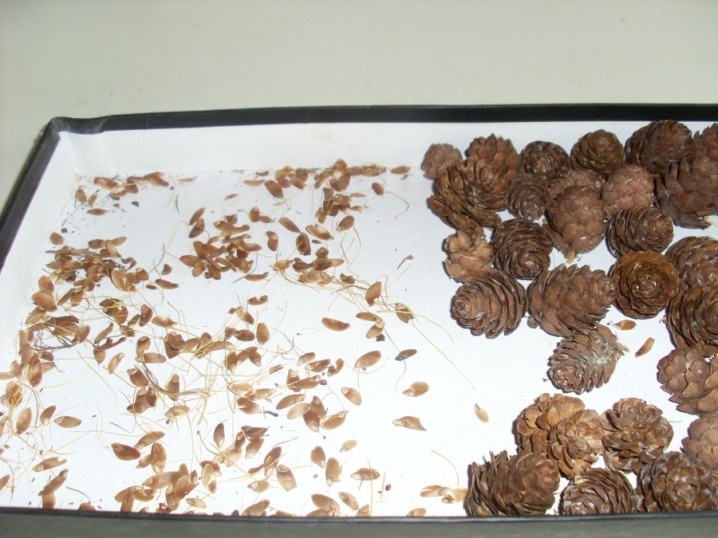
- To preserve varietal characteristics standard forms are propagated by grafting... To do this, a vertical cut is made on the seedling, a stalk with buds is placed in it and bandaged.

Diseases and pests
The culture is distinguished by high immunity to diseases and insects, but for prevention it is customary to periodically process it with a solution of copper sulfate. These problems do not always bypass the larch side, especially if the young specimen is not provided with proper care. If in the summer there is yellowing and flying around of the needles, then we can assume that the tree has become a victim of aphids. The larvae of this insect love to winter on the plant, and from spring the females lay eggs. Paraffin oil is considered an effective means of combating this pest. Another frequent uninvited guest of larch is the moth. The attack of this insect can be judged by the slow development of shoots, yellow needles, and falling needles. Insecticides will help get rid of the insect.

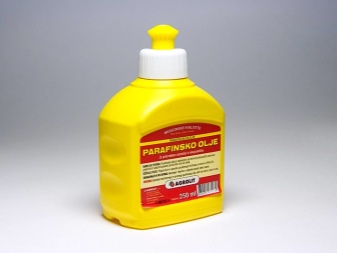
Of the diseases, the culture is most often affected by the Schütte fungus. This ailment develops under conditions of high humidity. Its presence is indicated by yellow and brown spots, gradually the plant withers.
The branches damaged by the disease should be eliminated and destroyed, and the tree should be treated with fungicides.
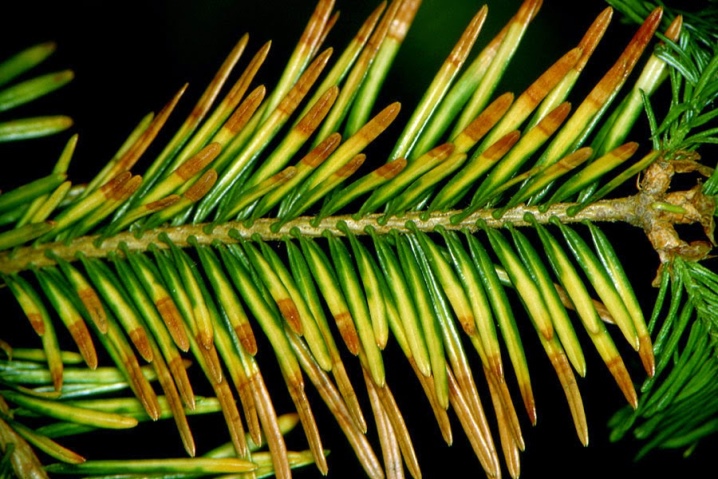
Use in landscape design
Stamp forms are suitable for decorating a garden in any style. They can decorate alpine slides, gazebos, flower beds, the entrance to the house. You can grow trees around the edges of the gate or make a hedge. Both single and collective landings are possible.

The stems harmonize beautifully with various decorative cultures. So, weeping varieties of standard forms are popular. They are great for decorating a small area. If this is the Pendula variety, then herbaceous plants will look aesthetically pleasing at its foot. Low-growing species create picturesque landscapes when combined with juniper, spruce, linden, ash, oak, rhododendron.
Ferns, stonecrops, astilbe also look beautiful as neighbors.
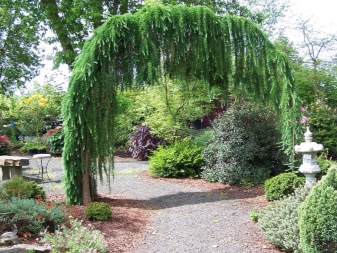

How to cut larch on a trunk, see the next video.































































The comment was sent successfully.